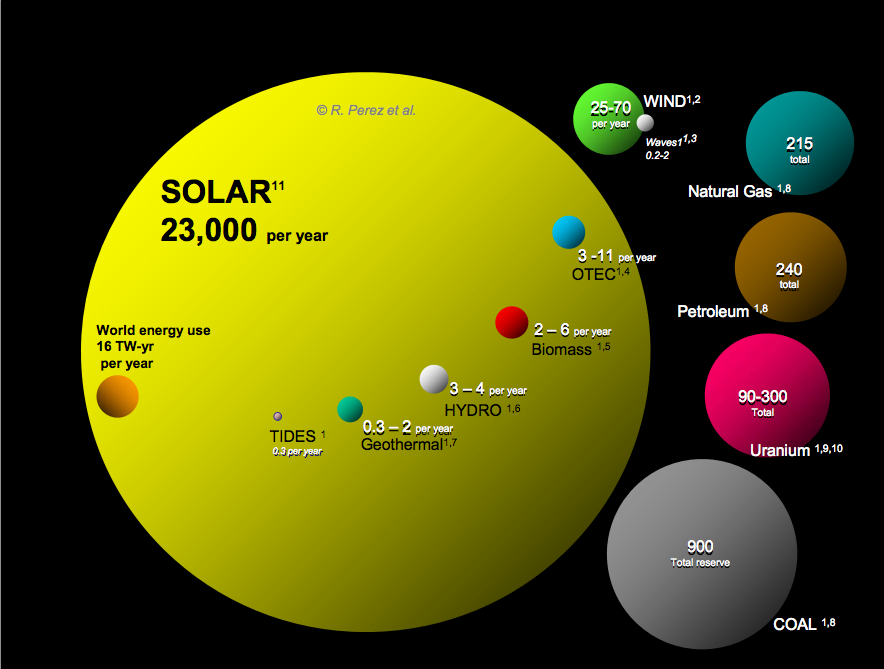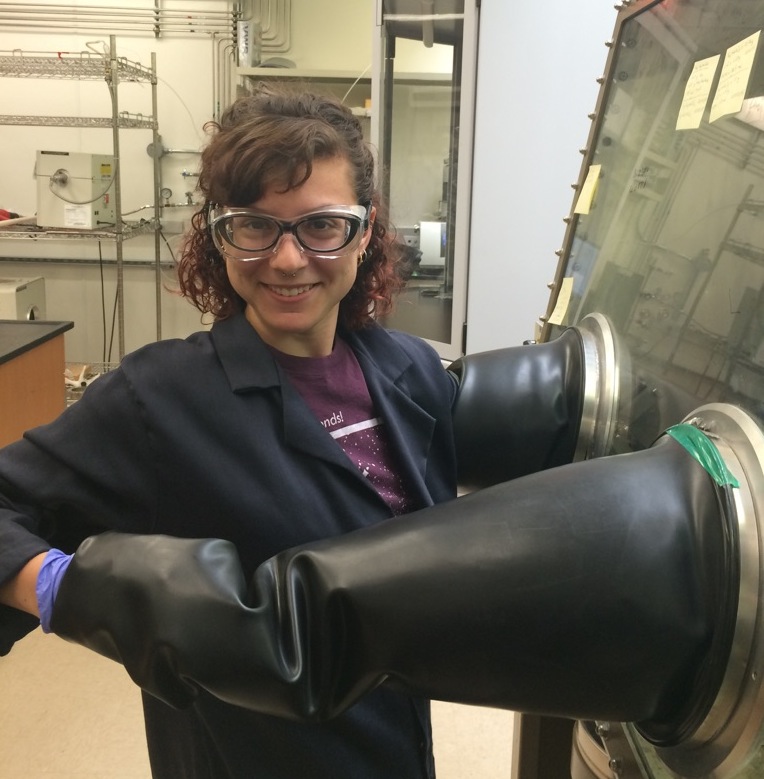By: Kelsey Bass
Everyone is probably familiar with the need for renewable energy sources to decrease our dependence on fossil fuels and other finite resources (or we are running out of dead dinosaurs to burn, as I like to say). The sun is an obvious source of energy- sunlight is free and abundant, which is indicated in the chart comparing current and predicted energy output for various resources. However, actually using the sun to compensate for finite resources and a growing energy demand is not a trivial task due to varying levels of sunlight around the world and the already existing infrastructure for other energy sources.

Comparing finite and renewable planetary energy reserves – http://www.asrc.albany.edu/people/faculty/perez
As a Wrigley Institute Sonosky Fellow, I study solar cells. Solar cells work by converting the energy of sunlight to electricity. The first of such devices was demonstrated in 1954 at Bell Laboratories. This device incorporated silicon, which is still in commercial solar cells today. The method of producing silicon for these devices involves cutting wafers from ingots or ribbons. Silicon can also be made as a thin film, which mean less material can be used. Solar panels, like the ones in the picture below, are a combination of many solar cells into one larger structure.
Other materials such as cadmium telluride and gallium arsenide are also currently used in thin film devices, and research continues to find new materials for solar cell technology.
You may wonder why there is so much research on solar cells and light absorbing materials if there are already commercially available solar cells that are ‘good enough.’ What today’s researchers aim to do is create solar cells that are easier to process than conventional silicon devices and that can improve upon the bulk and rigidity of silicon solar panels. This will open the door to new solar applications and more efficient solar technology.
In my current research my goal is to find a light absorbing material that competes with the efficiency of silicon devices, but can be made in thin film form – all with simple and cheap processing. Transparency, flexibility, and efficiency are greatly desired in the next wave of solar cells so that they can produce energy while incorporated into everyday objects such as windows. Through my research, I hope to advance this “next generation” of solar technology and help renewable energy resources become increasingly prevalent in the world.
Kelsey Bass is a PhD student in the USC Department of Chemistry, under Professor Brent Melot. She is researching environmentally-neutral ‘next generation’ perovskite solar cells, easier to process than commercial silicon cells, for use in renewable energy applications.



